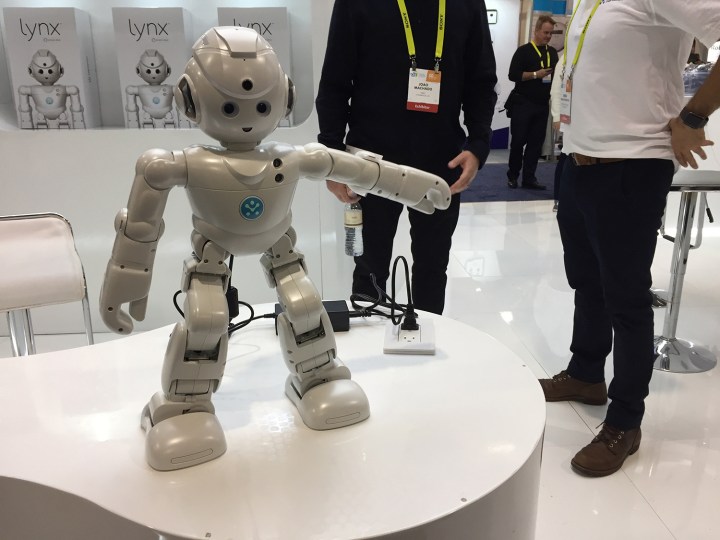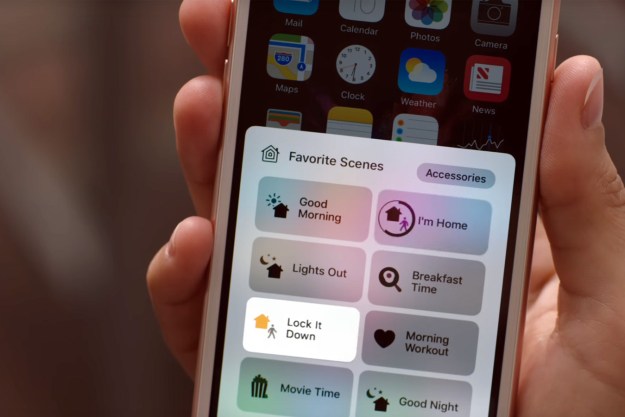Launched in 2013, Amazon Alexa quickly became one of the most recognizable voice assistants for smart homes the world over. It’s built into the core engineering of many popular Amazon products, like the Echo and Echo Show, along with industry-leading third-party hardware from the likes of Sonos, Ecobee, FitBit, and more. First- or third-party, one thing is for sure: Alexa continues to dominate the digital land of savvy voice assistants.
With just a wake word and a follow-up command, Alexa can perform a number of impressive feats, such as powering on/off your smart lights, streaming your favorite music, checking the news, searching the web, setting timers and reminders, and more. With seemingly no shortage of capabilities, it’s hard to imagine Alexa not being able to do something. But, like anything tech, there’s always room for additions and modifications.
Imagining a future where Alexa is even more powerful and renowned than the A.I. companion is now may seem lofty, but with how quickly device and software moves, that future is really just around the corner.
We like to see developers pushing the limits of modern tech, and as far as our Alexa wish list goes, we’ve got a few dreams we’d love to see realized someday. Here’s a list of the seven
Alexa-powered robotic companions

It’s one thing to have Alexa hosted on stationary devices like smart speakers, smart displays, and thermostats, but what if Alexa-powered hardware could willingly wheel, walk, or hover to you and yours upon command? Whenever the idea of actual mobile androids rears its head, conversation can quickly become apocalyptic, but not every robot portends the doom of humanity. And, believe it or not,
For a while now, Amazon has been working on an Alexa-powered robot code-named “Vesta.” Reported to be in the late stages of development, Vesta will be able to move around your home on wheels, responding to your voice commands while perhaps performing automated tasks and interacting with other smart home gear in the house.
Details are scarce and there’s no dates of note on the horizon, but giving Alexa a semi-sentient vessel would be a major move for Amazon and the world of web-connected gear. For now, we’ll just have to wait and see.
Expanded language expertise
It’s crucial for smart home developers to design their products with multilingual households in mind. As it stands, Alexa currently supports eight spoken languages, including English, French, German, Hindi, Italian, Japanese, Portuguese, and Spanish. Users can also program their
With over 6,000 languages spoken in the world today, it would be impossible to imagine our voice assistants recognizing and speaking them all, but with only eight under its belt, Alexa could do with a few additions.
Portable power for Alexa on the go

Alexa lives and works in a wide array of stationary home hardware — everything from speakers to thermostats, fridges, washer/dryer combos, and more. Thanks to devices like the Echo Auto and various Alexa-friendly automaker interfaces,
Released in India in 2019, the Echo Input Portable has a built-in 4,800mAh rechargeable battery that provides up to 10 hours of mobile music listening on a single charge. Unfortunately, you won’t find the device in the U.S.
Scanning Amazon’s digital shelves, you can also find a number of third-party battery docks for devices like the Echo speaker and Echo Show display.
So while there’s Alexa on-the-go gear available, stateside solutions are from non-Amazon developers only. It would be nice to see Amazon making its “Echo Input Portable” available across all markets, or maybe a new generation of Echo speakers and displays with built-in batteries. Speaking of mobile …
Data roaming for Alexa hardware

There’s no way around the fact that Alexa requires Wi-Fi to operate. But what if you’re not in range of a solid web connection? While tethering to your phone’s hot spot can get you by if you’re in a pinch, bandwidth-hungry devices can quickly eat into your monthly supply of roaming data. Echo devices may not be as data-starved as other types of web-connected hardware, but linking to your hot spot is never a good long-term solution. That’s where the power of LTE comes into play.
Picture it like this: Apple makes a standard Wi-Fi iPad and a model with Wi-Fi and cellular. What if Amazon did the same? Yes, an Echo speaker may not have the display and expanded functionality of a tablet, but being able to toggle data roaming on/off in the Alexa app could have some great benefits. What if there’s a network issue at home? What if you brought your Echo Dot to a Wi-Fi-less relative’s house? Or, maybe you’re traveling and your hotel’s network is simply overwhelmed by other guests. These are all scenarios where being able to tap into your Echo’s onboard data supply could be a lifesaver for all your Alexa-centric needs.
More wake words, please
Currently, “Alexa,” “Echo,” “Amazon,” and “Computer” are the only wake words for Alexa-powered devices. Simply put, we wish there were more options.
What would be really great to see is the ability to create your own wake words that you can then effectively train your Alexa hardware to recognize. Those of us who have purchased a new Echo product are familiar with the voice-recognition setup the device walks you through. Imagine being able to cue up a dedicated wake word creation tool in the
Improved geolocation services

Have you ever asked Alexa to tell you the weather in a nearby city, only for her to respond with the evening forecast for another part of the country entirely? It’s probably because the name of the city you’ve spoken is located in two (or more) states. While it’s impressive that
Over the next many generations of Alexa, it would be nice for geolocation functions to become even smarter than they are now. After all, East Coasters are typically not checking to see if it’s raining on the West Coast.
Better Alexa ecosystem communication
Have you ever been standing at the foot of the stairs when you suddenly remember to add something to your grocery list? You lean over the balustrade and say, “Alexa, add mayo,” to your nearby Echo Dot in the kitchen, when all of a sudden, from upstairs, you hear, “I’ve added mayo to your shopping list.” That was the Echo Dot on your bedroom nightstand responding to your first-floor command.
While changing the wake word is one way to bypass this trouble, it can get pretty annoying to remember which wake word to use for each individual Alexa product — an issue that is only compounded the more
Editors' Recommendations
- Amazon might launch a paid version of Alexa later this year
- Alexa adds new features to help with your holiday shopping
- Matter adds support for fridges, air purifiers, robot vacuums, and more with massive 1.2 update
- Adding AI to Alexa is the brain transplant we’ve all been waiting for
- The Amazon Echo Hub is almost the whole-home hub I’ve always wanted




